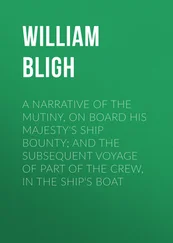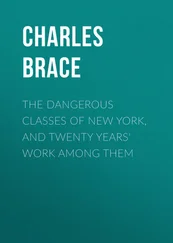Mattias Berg - The Carrier
Здесь есть возможность читать онлайн «Mattias Berg - The Carrier» весь текст электронной книги совершенно бесплатно (целиком полную версию без сокращений). В некоторых случаях можно слушать аудио, скачать через торрент в формате fb2 и присутствует краткое содержание. Город: London, Год выпуска: 2019, ISBN: 2019, Издательство: MacLehose Press, Жанр: Триллер, на английском языке. Описание произведения, (предисловие) а так же отзывы посетителей доступны на портале библиотеки ЛибКат.
- Название:The Carrier
- Автор:
- Издательство:MacLehose Press
- Жанр:
- Год:2019
- Город:London
- ISBN:978-0-85705-788-4
- Рейтинг книги:4 / 5. Голосов: 1
-
Избранное:Добавить в избранное
- Отзывы:
-
Ваша оценка:
- 80
- 1
- 2
- 3
- 4
- 5
The Carrier: краткое содержание, описание и аннотация
Предлагаем к чтению аннотацию, описание, краткое содержание или предисловие (зависит от того, что написал сам автор книги «The Carrier»). Если вы не нашли необходимую информацию о книге — напишите в комментариях, мы постараемся отыскать её.
The Carrier — читать онлайн бесплатно полную книгу (весь текст) целиком
Ниже представлен текст книги, разбитый по страницам. Система сохранения места последней прочитанной страницы, позволяет с удобством читать онлайн бесплатно книгу «The Carrier», без необходимости каждый раз заново искать на чём Вы остановились. Поставьте закладку, и сможете в любой момент перейти на страницу, на которой закончили чтение.
Интервал:
Закладка:
The instructions were therefore almost certainly that the guard force should refrain from escalation. Stand in their rows with automatic weapons at the ready. Let themselves be taunted by the songs and the chants, the obscene gestures, without batting an eyelid—until the activists moved first and tried to storm the base.
Somewhere on or around the base Ingrid and Jesús María could be waiting for the same decisive moment. A ripple through the crowd—disorder, ideally some violent scenes—would create the best opening for the mission, whatever it might be, because chaos is the best camouflage. An opportunity, in one way or another, to obtain root access to the base’s servers which Ingrid needed in order to connect Kleine Brogel to the Nuclear Family: our network of warheads around the world. One of the final pieces in the jigsaw of her demented plan.
And it seemed possible that Ingrid might specifically have chosen this occasion. Spotters’ Day. Friday, December 13. St Lucia’s day, the Sicilian martyr she had told me they celebrated in such a big way in Sweden.
I scanned the crowds, but saw no sign of anybody who might be Ingrid or Jesús María. Nor of our main pursuers: the compact Zafirah or the vast Kurt-or-John, whichever had survived. None of those who had been keeping track of me—or maybe of each other—at the Bruegelhuis before lunch.
So once all those in line had finally passed through the checkpoints and the clock by the entrance to the base—the illuminated atomic clock which was yet another of our propaganda weapons—had whirred over to 19.30.00.00, I started to walk toward the sentry box.
It was going to be almost impossible to get in. The sort of task which was routine for me.
“Are there any tickets left?” I asked with a marked Swedish accent.
The guard in the box gave me a long look, without saying a word. I was so hard to place, with my wig and the trim false beard—somewhere along the continuum of spotter, spy, hipster—the enormous backpack covered in decals, the absence of conspicuous binoculars. He had often seen me here before and could not disguise the effort of the search through his memory. But he was not able to identify my new face.
“Would you be so good as to show me your passport, first, sir,” he said at last.
I was ready to leap into action. Had already worked out my next step and the one after that, depending on what ensued: the positions of the guards relative to each other, the time needed to make my way through the outer and then the inner gate. But my passport only elicited a friendly peep from the computer. Both scanning and body search rendered unnecessary.
“A warm welcome, Herr Gustafsson. Here is your ticket!”
At our own base, like a pocket within the surrounding N.A.T.O. compound, everything was organized for Spotters’ Day. Ministers and military commanders in the control tower, together with members of the media. Attachés and other authorized observers formed the innermost ring, interspersed among them were a few lucky enthusiasts who had won a V.I.P. package by ballot. Then increasing numbers of people in concentric circles, each marked out by yellow lines in the asphalt. The outermost, at least three hundred feet wide, contained thousands of people.
I had been given a ticket at the center of the action. And it seemed that everyone was waiting for me.
Because just when the guards had escorted me to my place—a few enthusiasts having to move a fraction to the right before the mass of people flowed together again like liquid—three F.16s took off with a terrible roar. I had said no thanks to the earplugs offered to me on the way across the base, yet another detail which distinguished observers from enthusiasts.
Through my field glasses I saw the F.16s perform a “barrel roll” in close formation and then a neat “co-ordinated roll”. When the engines were at enough of a distance, the aircraft lights forming luminous bars against the black storm clouds, one could hear the exhilarated cheering of the fans in our inner base. With a few seconds’ delay came the response of the activists outside the gates, catcalls and howls.
This was only the warm-up. Although the show continued with “cartwheels” and “split ‘S’s”, impressive in themselves, everybody seemed to be waiting with impatience and even trepidation for “The New Trick”. According to the taxi driver it had been the subject of speculation for weeks, even months. Something which had never before been shown anywhere.
I glanced at an official’s watch next to me: 8.10 p.m. Some people were no doubt beginning to think, like me, that the rumors had been a way to try to match the world record for spectator numbers. The legendary Miramar Air Show in California usually attracted about seven hundred thousand visitors during the course of three days. Here they must have let in a hundred thousand people—for a single hour of flying stunts.
And that’s when it happened.
The spectators were herded outward by the guards, everybody, starting with us right in the middle out to the widest of the concentric circles. Then the ground opened up right where we had just been standing, in the middle of the asphalt. Two luminous circles became visible a couple of yards below the surface. The one on the left had a diameter of about eighty feet, the right-hand one at most thirty.
I knew that marketing was becoming an ever more important part of the military machinery. That the cost of everything was growing, requiring more and more external financing since our Federal military budget was no longer sufficient—even though it was now 50 per cent bigger than before 9/11. That even the astronomical cost of our new generation of nuclear weapons was presumably again a gross underestimate. And that all of our current primary investors were gathered around me in the V.I.P. circle here at Kleine Brogel—as well as media and military dignitaries in the padded spectator seats in the warmth of the control tower.
That, of course, was why the opportunity was being taken to demonstrate our new guidance system: the advantages must have been calculated to outweigh the disadvantages. But with the enormous number of people gathered, it was as big a P.R. risk as an opportunity. Especially bearing in mind that the system had never before been tested outside strictly controlled conditions.
Conventional weaponry was more precise than nuclear warheads and missiles, which usually needed to be no more than approximately on target, because of their enormous explosive force. But during recent decades the accuracy of nuclear weapons had improved.
And soon the new B.61-12 bomb would be operational. Our most expensive nuclear weapon to date.
The bomb was not going to be more powerful than other nuclear weapons currently in existence—rather significantly less so: no more than three times the force of the Hiroshima bomb. Yet most external commentators agreed that this would be the most dangerous weapon man had invented.
By using the unique radar-based guidance system, it was thought that the margin of error for the B.61-12 would be reduced from on average three hundred feet for nuclear bombs to at most one hundred. The technicians had as usual been even more optimistic. Not more than sixty-five feet in acceptable weather conditions, perhaps fewer than thirty if operated with special skill, so they said. In this way, according to the rhetoric, we would be able to reduce the number of civilian casualties.
The critics saw this differently. With the B.61-12, they claimed, we found ourselves back in the 1960s, at a period in our history when the evolution of mankind appeared to have halted for good. With Cold War-era dreams of tactical nuclear weaponry so compact that it might be carried in one’s pocket.
Читать дальшеИнтервал:
Закладка:
Похожие книги на «The Carrier»
Представляем Вашему вниманию похожие книги на «The Carrier» списком для выбора. Мы отобрали схожую по названию и смыслу литературу в надежде предоставить читателям больше вариантов отыскать новые, интересные, ещё непрочитанные произведения.
Обсуждение, отзывы о книге «The Carrier» и просто собственные мнения читателей. Оставьте ваши комментарии, напишите, что Вы думаете о произведении, его смысле или главных героях. Укажите что конкретно понравилось, а что нет, и почему Вы так считаете.












